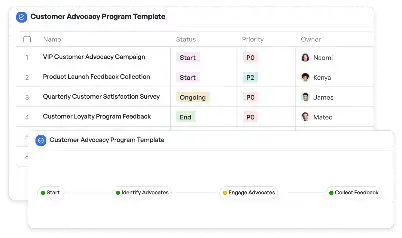Motor Imagery Classification Workflow
Achieve project success with the Motor Imagery Classification Workflow today!

What is Motor Imagery Classification Workflow?
Motor Imagery Classification Workflow is a structured process designed to classify motor imagery signals, typically derived from EEG data, into distinct categories. This workflow is crucial in the field of brain-computer interfaces (BCIs), where it enables the translation of neural activity into actionable commands for devices. For instance, in neurorehabilitation, this workflow is used to help patients regain motor functions by interpreting their brain signals. The workflow involves several stages, including data collection, preprocessing, feature extraction, model training, and evaluation. Each stage is tailored to handle the unique challenges of motor imagery data, such as noise and variability, ensuring accurate and reliable classification. By leveraging this workflow, researchers and practitioners can develop innovative solutions for medical, gaming, and assistive technologies.
Try this template now
Who is this Motor Imagery Classification Workflow Template for?
This Motor Imagery Classification Workflow template is ideal for researchers, data scientists, and healthcare professionals working in the fields of neuroscience, rehabilitation, and assistive technology. Typical roles include neuroengineers developing brain-computer interfaces, clinicians designing neurofeedback systems, and data analysts exploring motor imagery datasets. It is also suitable for academic researchers conducting studies on motor imagery and its applications. Whether you are building a prosthetic control system or designing a gaming application that uses brain signals, this template provides a robust framework to streamline your workflow.

Try this template now
Why use this Motor Imagery Classification Workflow?
The Motor Imagery Classification Workflow addresses several critical challenges in the field. For example, EEG data is often noisy and requires meticulous preprocessing to ensure accuracy. This template includes predefined steps for noise reduction and artifact removal, saving time and effort. Another challenge is the variability in motor imagery signals across individuals. The workflow incorporates advanced feature extraction techniques to capture meaningful patterns, improving model performance. Additionally, the template supports iterative model training and evaluation, allowing users to fine-tune their algorithms for specific applications. By using this workflow, you can overcome these challenges and focus on developing innovative solutions that leverage motor imagery data.

Try this template now
Get Started with the Motor Imagery Classification Workflow
Follow these simple steps to get started with Meegle templates:
1. Click 'Get this Free Template Now' to sign up for Meegle.
2. After signing up, you will be redirected to the Motor Imagery Classification Workflow. Click 'Use this Template' to create a version of this template in your workspace.
3. Customize the workflow and fields of the template to suit your specific needs.
4. Start using the template and experience the full potential of Meegle!
Try this template now
Free forever for teams up to 20!
The world’s #1 visualized project management tool
Powered by the next gen visual workflow engine




